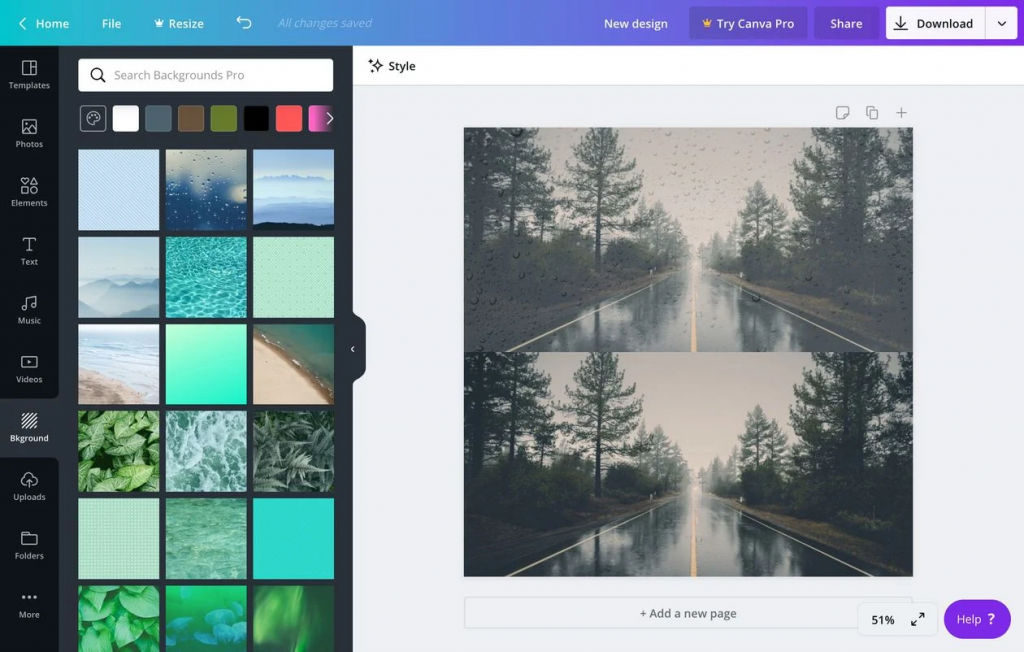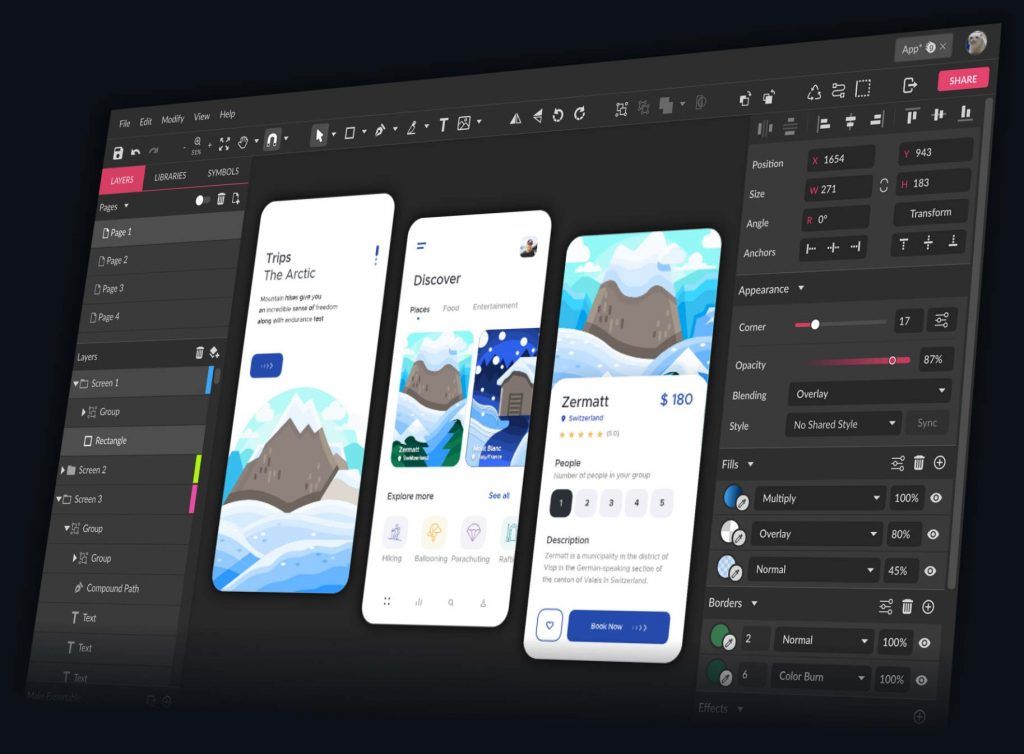
The advancement of technology has had an impact on nearly every aspect of people’s life. Drawing and related skills are no exception. What artists used to do with a pencil, paper, and paints can now be accomplished with a computer. Software, for graphic designers, becomes an extension of their artistic talents.
Choosing the perfect graphic design software may elevate your brand’s identity to new heights. However, determining the best graphic design software is challenging since it is a question of personal taste and relies on what you want to design. Therefore, we at SaaSworthy have put together the top 9 graphic design software in 2021 for you.
Table of Contents
What is graphic design software?
Graphic design software is a tool that enables designers to quickly produce attractive visuals by giving powerful design-based tools. It is mostly used to produce web-based designs utilizing a basic HTML language. Graphic design software is responsible for the advertisements we see, the items we like, and the signage we see all around us.
What is the importance of using graphic design software?
It helps in cutting down costs, branding of the images, videos, and other products. It also gives you the freedom to create aesthetically beautiful pictures and graphics. It aids in conveying the information to the audience more effectively by utilizing high-quality graphics generated with graphic design software.
1. Canva

Canva is SaaSworthy’s top choice if you have no prior design knowledge and want something simple. This free online graphic design software meets the needs of novice designers who do not want to go through the process of learning and acquiring expensive software.
The various features of Canva include –
- Its drag-and-drop feature allows you to choose the pieces and drag them to your work area to modify them.
- It allows designs, templates, and documents to be set up in a way that allows others to edit and make modifications.
- Users can also build unique designs and templates that include components of their brand.
- It includes the necessary tools for basic picture editing and enhancement and can be utilized by novices, professionals, and teams.
The limitations of Canva are –
- The design quality decreases from the original when you download the design.
- It lacks advanced graphic designing features.
2. Sketch

Sketch is a vector-based graphic design software. These digital designs are utilized in the creation of websites, applications, and user interfaces. It is ideally suited for generating interactive UI/UX prototypes. Though Sketch isn’t intended for picture editing or print work, it’s excellent for creating icons and interfaces for websites and mobile applications.
The various features of Sketch include –
- It automatically saves all step-by-step design changes to prevent design losses.
- To eliminate half-pixel renderings or poor alignment, it makes use of grids, snap to grid, and snap to pixel features.
- You can mirror designs on larger devices for team viewing to determine the look of the design in a certain device.
- Using extensive community support, designers can quickly discover tailored plugins for particular tasks.
The limitations of Sketch are –
- It has support only for macOS and can’t be used by Windows users.
- It has restricted illustration features, which can obstruct elaborate illustration projects.
3. CorelDraw

CorelDraw is a graphic design software that allows you to generate professional vector graphics. There are powerful design tools available to assist you in working quicker and smarter. The software includes online graphic tools and templates for creating unique web content, and it allows you to post straight to your WordPress site.
The various features of CorelDraw include –
- The desktop UI environment, icon sizes, toolboxes, document opening choices, and the window border color scheme are customizable.
- Thousands of high-resolution images, over 1000 fonts, 350 professional templates, 500 interactive frames, 2000 vehicle templates, 600 gradients, vector, and bitmap files are available to users.
- When dealing with system-intensive complex vector graphics, users can choose GPU acceleration over the usual CPU.
- It provides app-wide workflow, under-the-hood innovation, and performance upgrades.
The limitations of CorelDraw are –
- Beginners might find it challenging to use.
- There is no subscription service, and you have to pay for every new version update.
4. GIMP

GNU Image Manipulation Program (GIMP) is the most widely used open-source, free raster graphics design software. It offers many of the same features as premium software. Though its interface isn’t as appealing, it offers extensive picture editing, sketching, and cropping features of the more well-known software.
The various features of GIMP include –
- It is incredibly light and makes efficient use of computational resources, resulting in fast performance.
- It works with a wide range of operating systems, including Windows, macOS, Solaris, Linux, and BDS.
- The GIMP community has created a plethora of fantastic plugins for additional functionality that are completely free.
- It allows users to sketch the design using tools such as cloning, pencil, and airbrush, and it provides tutorials for each function to assist users.
The limitations of GIMP are –
- Because the development community is small, updates are comparatively slower.
- The UI is not user-friendly for macOS users and needs improvements.
5. Vectr

Vectr is a free graphic design software for creating vector graphics. The easy learning curve will appeal to both casuals and amateurs. Vectr is an easy-to-use framework for creating any type of 2D graphics. It may be anything from business cards to logos, posters, and pamphlets.
The various features of Vectr include –
- It uses mathematical equations rather than stored pixels to render clear and sharp-lined graphics for printing in any dimension.
- It includes extensive video instructions for using the software to learn and build whatever you want.
- It is very beginner-friendly and can be accessed from a web browser or standalone desktop app.
- By default, all Vectr projects are backed up online, allowing you to view your files from any device.
The limitations of Vectr are –
- It lacks the features needed by an expert designer.
- You cannot download the best quality of the content you are working on.
6. Affinity Designer

Affinity Designer is a simple, competent, and less expensive graphic design software alternative to Adobe Illustrator. It provides a fantastic cost structure while also being easier to use and quicker than Illustrator. Affinity Designer has both vector and raster workspaces, and you can quickly switch between them.
The various features of Affinity Designer include –
- It uses dynamic on-screen guidance to guarantee that objects and designs are set out with precise alignment and measurement.
- It allows users to work in both pixel art and vector art settings without the need for any other software.
- Its flexible grid system allows designers to set up grids when designing isometric video game visuals and icons.
- It gives them complete control over angles, spacing, gutters, and subdivisions to produce realistic layouts.
The limitations of Affinity Designer are –
- It lacks Illustrator tools like the natural perspective grid and vector eraser.
- It cannot export Artificial Intelligence files.
7. Adobe Illustrator

Adobe Illustrator is the industry standard for vector creation in graphic design software. Adobe Illustrator is ideal for graphic designers and artists that work on a professional level. It has a wide range of tools that you can use to create visual designs for video games, websites, brand logos, and print.
The various features of Adobe Illustrator include –
- It generates graphics files that are quite modest in size, allowing designers to quickly send them as an e-mail attachment.
- Its in-panel editing functionality makes the designers more efficient by allowing them to modify numerous artboards at the same time.
- It renders graphics using mathematical equations rather than stored pixels to ensure clear and sharp lines for printing in any dimension.
- Adobe Stock provides you with access to over 90 million photos, illustrations, templates, and videos.
The limitations of Adobe Illustrator are –
- It involves a steep learning curve to utilize its full potential.
- It is more expensive than other vector-based graphic design software.
8. Xara Designer Pro

Xara Designer Pro is a unified creative graphic design software for creating both print and web designs. This software is widely used to make drawings, edit photographs, and build web pages for web and print design solutions. It is known for its speed and performance in renderings, creations, and changes.
The various features of Xara Designer Pro include –
- Its drag and drop functionality enables designers to zoom up to 25,000\% and effortlessly use direct action capabilities for faster project execution.
- It provides anti-aliasing to improve the clarity of on-screen pictures by smoothing the edges of objects by blending the edges with the backdrop.
- It has cloud features for viewing, editing, and updating documents using a web browser and is compatible with Google Drive and Dropbox.
- It provides scaling, solid dragging, and rotating of objects to obtain the finest editing results.
The limitations of Xara Designer Pro are –
- To utilize all of the features effectively, a steep learning curve is required.
- It is available only for Windows users.
9. Gravit Designer

Gravit Designer is an HTML-based free vector graphic design software that produces high-quality vector drawings. You can use it online or download it to your computer and install it. It is a fully-featured design software that you can use for both personal and business reasons.
The various features of Gravit Designer include –
- It provides complete cross-platform support for Windows, macOS, Linux, and Chrome OS, allowing the designer to work effectively from any system.
- It supports a variety of file types for import and export and also enables the editing of scalable vector drawings.
- It provides a modern user interface that is completely configurable, interactive, and simple to use.
- It includes a variety of tools, such as the Lasso tool, Bezigon tool, and Pen tool.
The limitations of Gravit Designer are –
- There is no option for real-time collaboration.
- Design prototypes cannot be run on smartphones.
Conclusion
We hope that we were able to simplify your process of choosing the graphic design software that is best tailored to your needs. This list of graphic design software covers all potential requirements and objectives. Thereby, it provides you with a wide array of alternatives to choose from.
If you are looking for free graphic design software, visit our list of the best free graphic design software.






